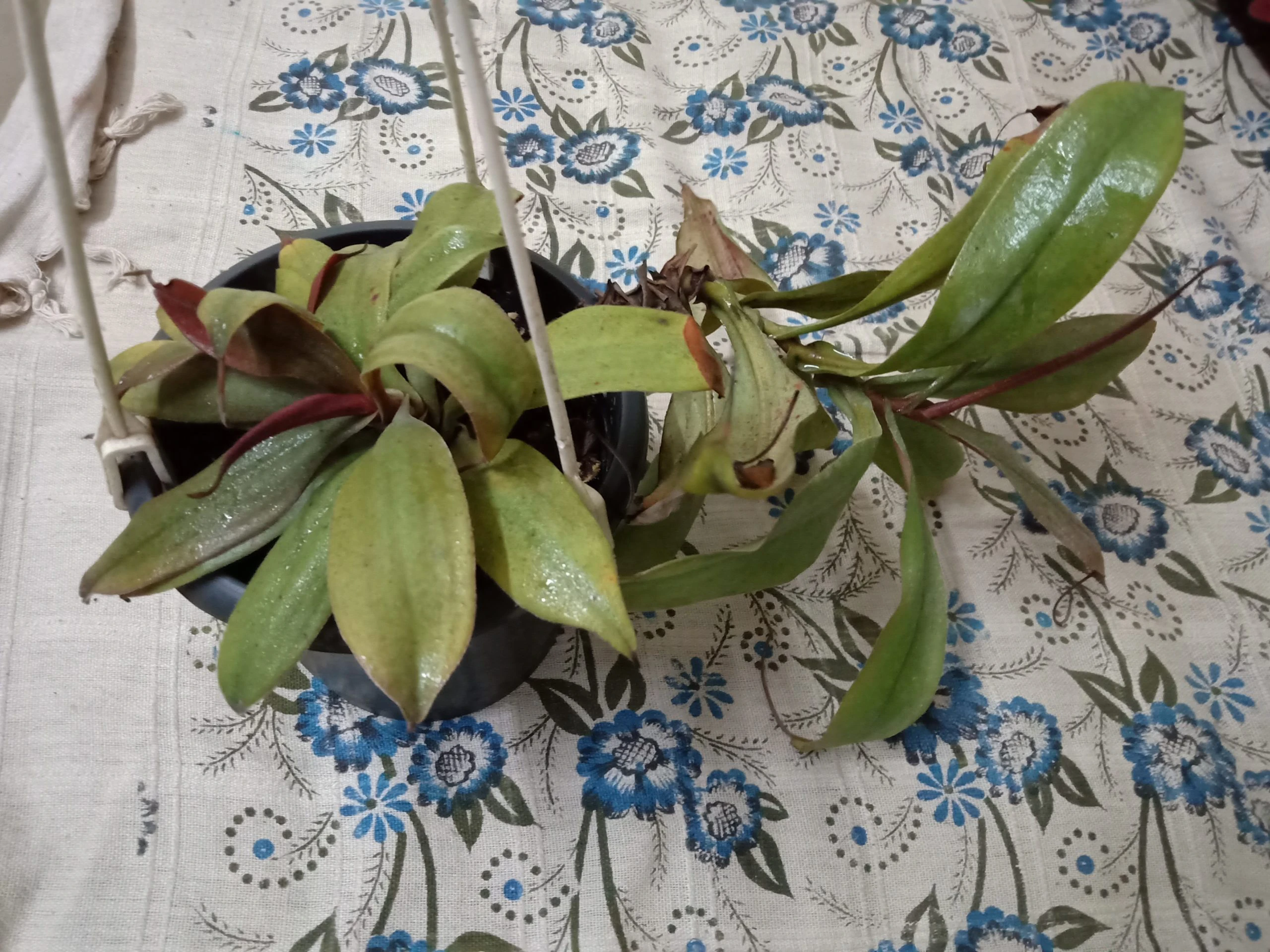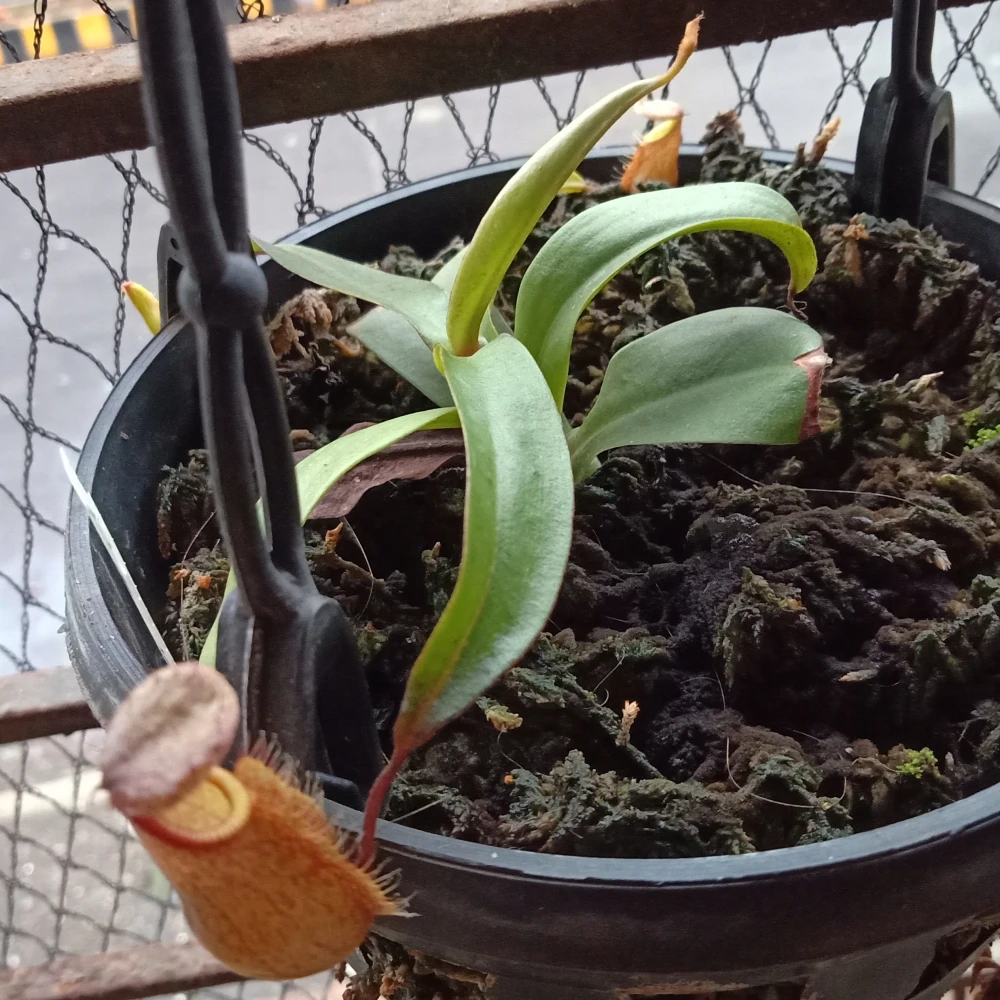I am going to try and add photos to give a visual idea later, but frankly, I don’t usually take pics while working with plants, so it may be a bit of a struggle to find the right ones. So it may have to wait till the next time I do cuttings.
Right at the start – I have not had good success with rooting hormones. Others may have had, and they have their methods, of course, but mine no longer uses rooting hormones.
For cuttings of species that root readily. Mirabilis, ventrata, and such… there isn’t a lot to say. I cut up the vine and put it in soil under intermittent misting and am done. Maybe peel or split a bit of the bottom of the stem to expose the cambium.
The following is a more… elaborate process that I use with plants that don’t root as easily or more expensive plants, where I can’t afford failed cuttings.
- Identifying the plant. I don’t make cuttings from plants with just one growing point, unless the vine is really, really long (hypothetical, I have not had this). For example:

Usually, I’ll take cuttings from the vine, or separate out a basal if a plant is growing strongly and has one or more basals. - Deciding how much plant material to take out. I generally leave at least one growing point with at least 4-6 leaves. Basals or vine depends on what I want. If there are a lot of basals, I may decide to take one or two out and let the vine and one or more basals continue. Or I may take out the vine and leave one or more basal to continue. Generally, my choice will avoid disturbing the roots, so whether it is the basal or the vine, I will cut above the root of the soil if possible, or dig in slightly to the stem of the basal, but I never unpot the plant – root shock as well as the trauma of parts being cut off can kill the mother plant. Ideally I leave enough of the plant behind, with undisturbed roots for it to continue to grow strongly.
- Preparing the material. Once, cut, I put the material for cuttings into a large bowl of clean water and rinse them well. I leave it in the water while I prepare other things if I need to. I don’t take them out and leave them drying. I use this opportunity to wash off any dust, pests, etc, leaving behind clean stems and leaves.
- Trimming the material and preparing the cuttings. I take another bowl of clean water and add some trichoderma or systemic fungicide (optional) and seaweed fertilizer (half strength or so. Not too much). I will drop prepared cuttings into this bowl. To make cuttings, I cut the vines into segments with 2-3 nodes, depending on how readily the plant roots. Very rarely will I do single node cuttings. I generally make the cut so that there is some stem below the bottom node if possible to avoid removing leaves. I cut leaves down to about a third of their size, maybe even less for very large leaves. I don’t touch the growing tip segment, leaving any newly unfurled leaves as they are. For basals, there isn’t much to do. Remove dead/damaged leaves and drop into seaweed fertilizer.
- Seaweed spa. I let the cuttings soak in the liquid fertilizer for a while while I make the pots for the cuttings.
- Potting mix. I generally have a well draining mix for this. Without roots, the cuttings can’t really take up water, and soggy mix will only invite rot. Lots of perlite or gravel or whatever. I’m not very picky about the soil. Anything will do as long as it holds some moisture, isn’t nutrient heavy and doesn’t attract contamination. I’ve used construction gravel too. Expensive mixes are not necessary.
- Growing the cuttings. I push the cuttings into the mix and place the whole thing under a misting system, so that the humidity is high. If you are using rooting hormone, you’d be applying it just before pusing the base of the cutting into the media. Alternatively, you can put them in a plastic bag, etc – but I have had issues with fungus when ventilation is poor. It may be better to poke holes into the plastic bag for ventilation and leave some water in the bottom to evaporage and create some extra humidity.I put them where they will get good light, but not direct sunlight – particularly if they are in bags. In the open air under the misting system, some sun is okay as long as it isn’t prolonged exposure that cooks them.
- Leaving cuttings undisturbed. UNDISTURBED. Once I’ve put the cuttings in their place, I don’t touch them at all unless I have to remove any obviously dead or contaminated ones. No moving, no picking up to check, nothing. Plants are not animals. They don’t like to be moved. Cuttings are already stressed without roots. Don’t harass them till you either see some growth or they are visibly dead.
- If your cuttings have done well, you will see new leaves forming from one or more nodes well before the half cut original leaves of the cuttings dry out. You should see swelling at nodes within a week or two and it usually takes another month or two to see leaves.
 In three months or so, you should be seeing the first pitchers.
In three months or so, you should be seeing the first pitchers.

- Given good humidity, basals and the apical cuttings of vines that already have growing points, should just continue to grow, sometimes without even losing the pitchers they originally had if you do things right.
That is it, I think. Will add anything else I can think of here, or ask away. Share your method for making cuttings too.
(Edited to add some details)
